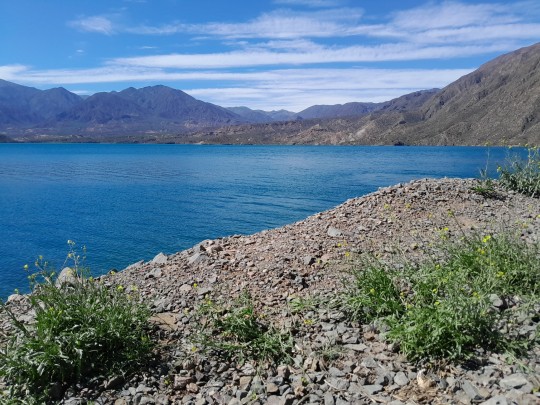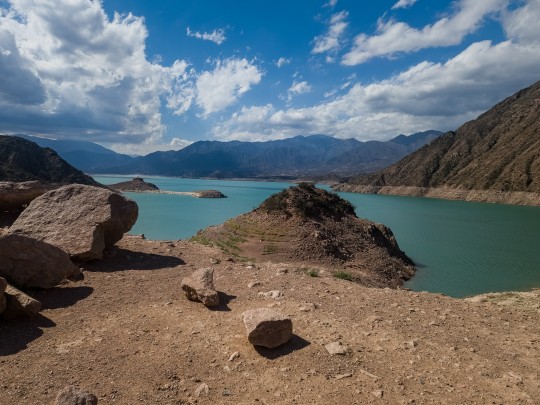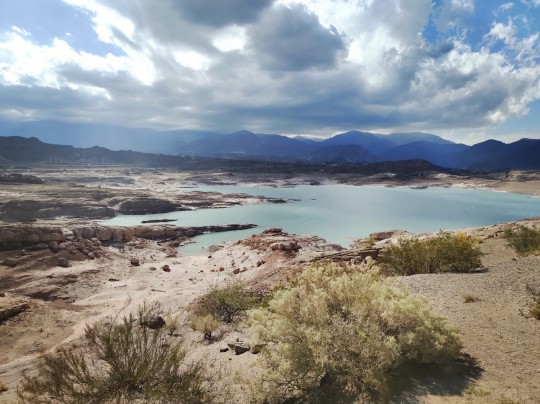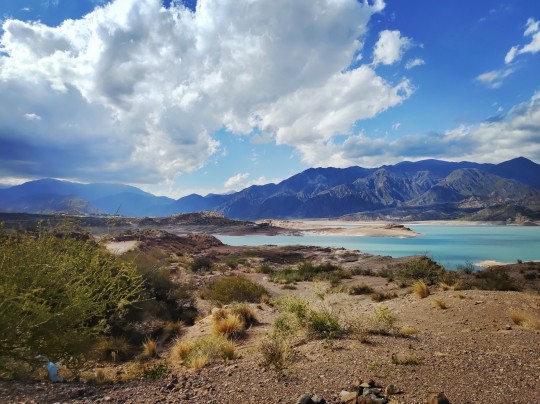#potrerillos
Explore tagged Tumblr posts
Text

2 notes
·
View notes
Text



De las cosas más típicas de Mendoza tienes el sánguche de lomo "Lomito", una delicia en un pan sin miga muy parecido al pan árabe sin serlo, dentro lomo (carne) lechuga y tomate lleva el clásico de ahí en adelante le metes lo que quieras, empanada y churro, más Mendocino solo faltan las tortitas!!!
#foodtasters#foodtastersperu#foodtaster#peruvianfoodtasters#argentina#diquepotrerillos#Potrerillos#mendozamagico#Mendoza
9 notes
·
View notes
Text

Grand Hotel of Potrerillos, Mendoza, Argentina
Argentinian vintage postcard
#sepia#hotel#photography#vintage#grand hotel#postkaart#potrerillos#ansichtskarte#mendoza#ephemera#carte postale#postcard#postal#briefkaart#argentinian#photo#argentina#grand#tarjeta#historic#postkarte
2 notes
·
View notes
Text

1 note
·
View note
Text

Dique Potrerillos
0 notes
Text

¿Sabías que en el noreste de México existía una tribu enigmática conocida como los "Rayados"? Estos grupos, nombrados así por los españoles debido a las impresionantes marcas que adornaban sus cuerpos, han dejado una huella indeleble en la historia de la región. Según el investigador e historiador Eduardo Cázares, los "Rayados" y los "Borrados" fueron etiquetados por su apariencia única: cuerpos pintados y rayas audaces en el pecho.
A pesar de no haber sucumbido al estilo de vida europeo cristiano y capitalista, estas tribus fueron progresivamente exterminadas o asimiladas por los mestizos. Sin embargo, su legado sigue vivo. En Nuevo León, sitios arqueológicos como Piedras Pintas en Parás o Boca de Potrerillos en Mina mantienen viva la memoria de estas culturas originarias.
Pero la sorpresa no termina ahí: muchos de nuestros hábitos culinarios actuales tienen sus raíces en estas tribus. El popular consumo de carne seca y la tradicional barbacoa de venado son herencias directas de los antiguos "Rayados". Así, a través de la gastronomía, la esencia de estas enigmáticas culturas indígenas perdura en el corazón de Nuevo León.
9 notes
·
View notes
Text

Scanned from a slide I brought from eBay, image is being used non-commercially so this should be fine.
Codelco (Corporación Nacional del Cobre de Chile/Chilean National Copper Corporation) № 83 at Llanta, October 1980.
New to Codelco in 1959, it was the last of three EMD G12s built for Codelco. It was allocated to División Salvador, alongside the later GR12Us and G22CU, and worked the line from Potrerillos to Barquito near Chañaral. It often worked the line from El Slavador mine onwards.
Codelco sold its railway interests to the newly formed Ferronor (Empresa de Transporte Ferroviario S.A) c. 199x and 81-83 continued to work the line. Unfortunately, a disastrous rain event washed out vast parts of the line, and the Diego de Almagro branch line was permanently closed in 2015. This also led to the demise of the 3ft 6in 1067mm gauge FCTT (SQM) in Tocopilla.
Afaik the former División Salvador locomotives are still in service with Ferronor. But I have been unable to confirm this.
83 and company are all metre gauge engines.
17 notes
·
View notes
Text







Potrerillos, Mendoza, 2022
Cámara: Nikon D5600 Lente: Nikkor 35mm f/1.8
7 notes
·
View notes
Text
¿Es posible no enamorarse de la vista de este lugar? Envíale este video a esa persona que conoces y ama Mendoza
Potrerillos, Mendoza
Video: @retratando_paisajes
Potrerillos en invierno se convierte en un escenario de cuento. Las montañas nevadas enmarcan el maravilloso paisaje.
¿Qué hacer en Potrerillos?
Potrerillos es un destino ideal para quienes buscan aventura y naturaleza. Aquí algunas de las actividades más recomendadas:
- Deportes acuáticos: Desde kayak hasta la pesca, el embalse tiene opciones para todos.
- Aventura extrema: ¿Te atreves al rafting en los rápidos del río Mendoza o a lanzarte en tirolesa sobre el valle?
- Caminatas: Senderos que ofrecen vistas espectaculares para cada tipo de excursionista.
Visitas a Vallecitos: Un centro de esquí cercano a Mendoza que no te podés perder.
- Ruta 7 hacia la alta montaña: Un viaje panorámico que te llevará al corazón de los Andes.
¿Qué actividad te gustaría probar? Etiquetá a tu compañero de viajes y empiecen a planificar su próxima aventura. ¡Contame en los comentarios qué es lo que más te llama de Potrerillos!
2 notes
·
View notes
Text
Hay tres recuerdos particulares que siempre vuelven, la videollamada con John Cage de fondo, emocionarnos llorar, la caminata un día nublado mientras lloviznaba por zona sur, y el paseo en los potrerillos, tristemente no se si alguno fue real o simplemente yo lo quise mas de la cuenta, a veces me pregunto si ame a alguien real que me amo, o alguien que simplemente simulo algo parecido al amor. Podes vivir con eso un tiempo y después se borra, o como todo se esconde en el lugar de la oscuridad.
6 notes
·
View notes
Text
5/12 dernier jour en Argentine

Alors que nous sommes en Argentine depuis moins d'une semaine, notre course folle vers Santiago va nous pousser à quitter le pays dès demain. Vu le nombre de contrôles routiers subis par Dr. X, on comprend qu'il ait envie de quitter le pays le plus vite possible.

Cette belle journée ensoleillée a donc été l'occasion de jouir du train de vie de l'européen moyen en Argentine. On remercie d'ailleurs Javier Milei, le nouveau président élu argentin, qui en plus de faire probablement sombrer son pays permet aux touristes impitoyables que nous sommes de profiter de la dévaluation du pesos.

Nos activités ont donc consisté à papillonner de boutique en boutique à la recherche de souvenirs authentiques, chose qui visiblement est rare à Mendoza. Plus décevant encore, Touille n'a pu trouver de cartes postales dignes de ce nom car "de nos jours tout le monde utilise les réseaux sociaux"... Reste les vendeurs de vins qui valent pour certains le détour.

Fort heureusement, un restaurant salvateur a pu consoler ces maigres déconvenues par un steak bien gras et juteux, la viande se révélant même (enfin) meilleure que celle que nous avions déniché au supermarché.

La majorité des protagonistes ne pouvant passer plus de 48 heures dans une grande ville sans faire une crise d'eczéma, il était déjà grand temps de retourner vers de plus déserts paysages. Nous avons donc fait route vers la frontière, nous arrêtant aux abords du lac Potrerillos, qui offre un beau cadre à notre dernière nuit sous le ciel argentin.
4 notes
·
View notes
Text





Potrerillos. Mendoza, Argentina.
3 notes
·
View notes
Text
Te das cuenta que el argentino es humilde cuando le ves que tiene un 6% de contenido de no tiene un carajo de abundancia de contenido
Siempre el argentino humilde de poco contenido y le da valor a ese contenido como si fuera todo lo que va a estar bien si sacan otro contenido al año próximo
Eso de la vida que llevan
son tan negros los argentinos que me da vergüenza las negradas que hacen
Son una bola de ruidosos como les decía yo a los patrióticos de la pirámide patriótica del gobierno nazi de la escuelita patriótica del Celepito Coreo
Jajajajajajajajajajajajajajakakakaka se me prendían hasta por la cabeza
Igual que los patrióticos del Bauti Herrera en el potrerillos
No pueden ser personas civilizadas sin estar siendo tan negros al pasar vergüenza
Y la Julia Rivas se hace la fina y tiene una vida de argenticulada tradicional que es
Yo salgo a las calles de Norteamerica y veo la tranquilidad que tienen los norteamericanos de son re tranquilos y decís “Porque allá en el Argentina no son así”
Con lo que yo visto de Norteamerica es algo que ME FASCINA
Me copo
Esa es la vida careta
No la vida de gronchos
No pueden llevar la vida de un norteamericano
Yo nomás porque me gusta esta vida que se lleva en el norte
porque yo no soy patriótica
Yo te elijo tri millones de veces la vida de los Norteamericanos
Son gente con clase
Son gente estabilizadas
No revoltosos ruidosos de negrada ruidosa que son los patrióticos
Acá en Norteamerica se lleva otra vida
No pueden llevar la vida de un villancico
Ni tampoco pueden comparar la vida de uno que se fue a Norteamerica a construir su futuro amorosos osea YO
No tenía futuro en el Argentina
No hay futuro en el Argentina
Son perdedores en el amor
Siempre pierden los patrióticos en el amor
Yo me vine para Norteamerica para cumplir mi sueño y ya para tener un futuro
No soy la tontita que siempre hace lo mismo de encima son felices así con esa vida tan lenta del mismo eje que tienen siempre en repitencia
2 notes
·
View notes
Text

1 note
·
View note
Link
0 notes
Text
Campaña de descacharrización, en la localidad de Potrerillo Pueblo en Ixtac
➡️ Le informamos a la ciudadanía que, el dia jueves 14 de noviembre estará pasando por sus hogares la Campaña de descacharrización, en la localidad de Potrerillo Pueblo, en un horario de 9:00 de la mañana a 2:00 de la tarde.En donde 𝗽𝗼𝗱𝗿𝗮́𝘀 𝗱𝗲𝘀𝗲𝗰𝗵𝗮𝗿 𝘁𝗼𝗱𝗼𝘀 𝗮𝗾𝘂𝗲𝗹𝗹𝗼𝘀 𝗼𝗯𝗷𝗲𝘁𝗼𝘀 𝗾𝘂𝗲 𝗻𝗼 𝘀𝗶𝗿𝘃𝗮𝗻 𝘆 𝗲𝘀𝘁𝗲́𝗻 𝗮𝗰𝘂𝗺𝘂𝗹𝗮𝗻𝗱𝗼 𝗮𝗴𝘂𝗮, con el objetivo de 𝗱𝗶𝘀𝗺𝗶𝗻𝘂𝗶𝗿 𝗹𝗮 𝗽𝗿𝗼𝗽𝗮𝗴𝗮𝗰𝗶𝗼́𝗻 del mosquito transmisor del #Dengue,…
0 notes